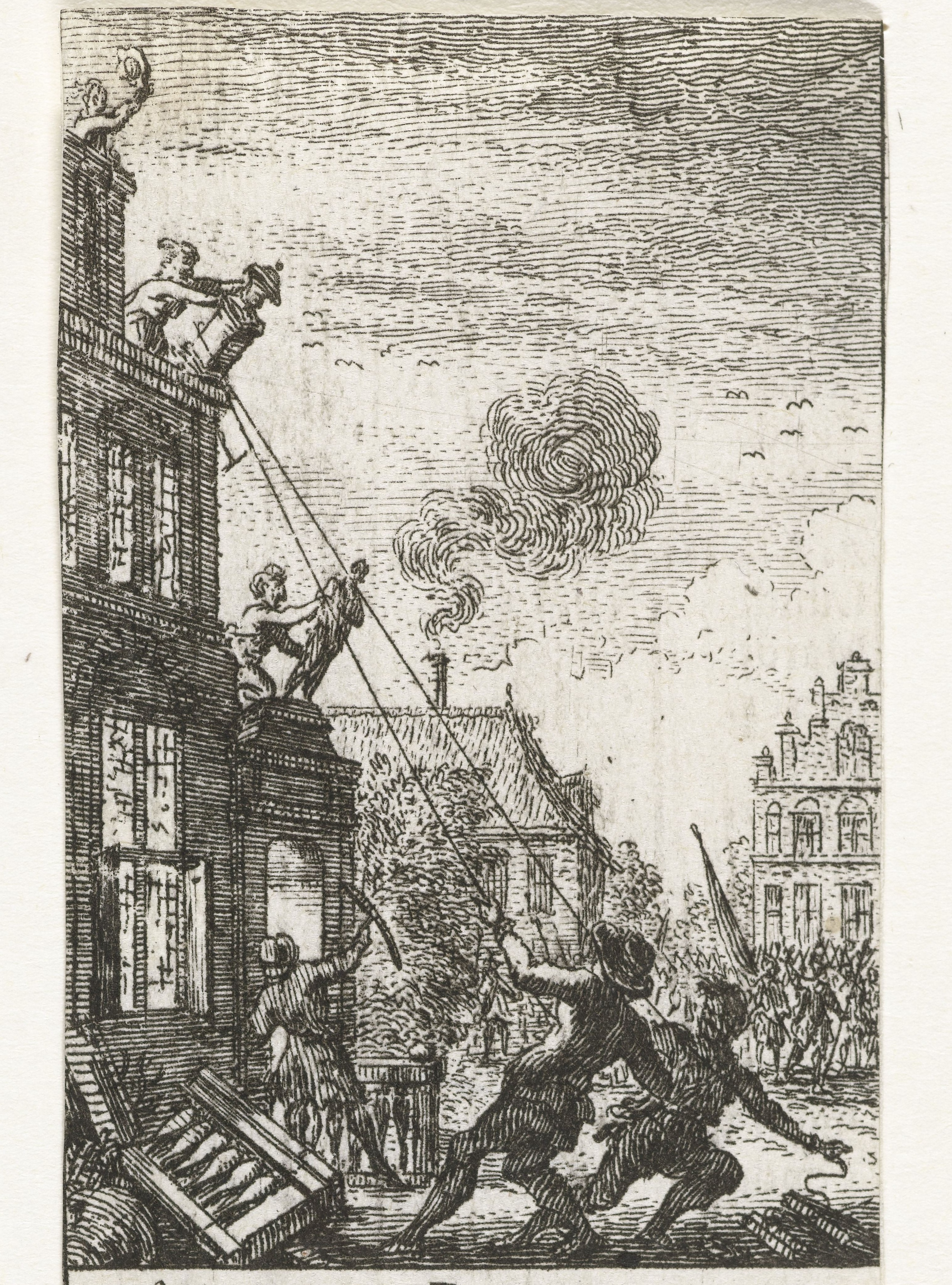- Out-of-Stock
Governor Duff plate
A Yongzheng period (1722-1735) plate with 'Governor Duff' decoration in Chinese verte-imari, 18th century, around 1725-1730, Jingdezhen, China.
Chinese verte-imari
Dimensions: 23,3 cm diameter.
Reference: 10036
A Kangxi period (1662-1722) plate depicting a scene of the Costerman uprising in Rotterdam with Chengua (1465-1487) six-character mark on the back, 17th century, around 1690-1695, Jingdezhen, China.
Blue and white
Dimensions: 20 cm. diameter.
 Secure payment
Secure payment
100% secure payment
 Worldwide shipping
Worldwide shipping
Fast delivery
 Free shipping in EU
Free shipping in EU
On all orders
 Professional packaging
Professional packaging
Professional order packaging
The center scene in blue and white is derived from a medal by Jan Smeltzing (1656-1693) after an engraving by Gerard van Loon. The small and fine decorated plate has a six-character Chengua (1465-1487) mark on the back. Because the Rotterdam Riots took place between September and October 1690, the plate can be dated between 1690+ and 1695 considering the order, voyage and production time of this plate in China.
In 1690, the Costerman uprising broke out in Rotterdam, an urban revolt that happened unexpectedly during a time of peace in the Dutch Republic. The riots were triggered by a conflict over the "impost" – a tax on wine – which many citizens tried to avoid in creative ways. The situation escalated when city militia member Cornelis Kosterman got into a fight with tax collectors and killed an informer, Antony Kerry. Kosterman was arrested, pressured to confess, and eventually sentenced to death.
The harsh punishment and the execution – which took the executioner five strikes to complete – caused outrage among the people of Rotterdam. The public, already angry with the hated tax collectors and the unpopular bailiff Jacob van Zuylen van Nijevelt, rose up in protest. The city militia did nothing as an angry crowd looted the house of one of the tax collectors.
The unrest grew worse when a pamphlet against Van Zuylen was circulated, and a crowd gathered at his house. After a violent confrontation that left several people dead, the rioters managed to seize cannons and fired on Van Zuylen’s house, which was then looted and destroyed. The bailiff escaped, but the riots forced the city council to release all prisoners, and Van Zuylen van Nijevelt was officially dismissed.
Reference:
Similar examples can be found in:
-Rijksmuseum Amsterdam object nr. AK-RBK-1953-63.
-Princessenhof Leeuwarden object nr. 02464.
-Shanghai Museum [2024-07-17].
-Howard & Ayers, 'China for the West', vol.I 1978, p. 60.
-Beurdeley, ‘Porcelain of the East India Companies’, 1962, p.189.
-D.F. Lunsingh Scheurleer, 'Chine de Commande', 1989, p. 200.
See also: Christies 16 December 2010, Live Auction 2848 'European noble and private collections', lot nr. 773.

'Riot at Rotterdam, 1690', attributed to Simon Fokke (1722-1784).
source: rijksmuseum.nl
Source: A. Schellens, 'Rellen in de Gouden Eeuw: het Kostermanoproer in Rotterdam 1690', 2015.